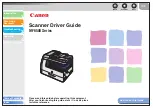
Safety Precautions
Safety – ii • • • • • • • • • • • • • • • • • • • • • • • • • • • • • • • • • • • • • • • • • • • • • • • • • • • • •
!
Important Safety Instructions
Risk of electric shock.
• Do not exceed voltage limits between inputs as indicated
in the “Specifications” on page 3-2.
• Use extreme caution when working with circuits that have
greater than 60 volts DC or 24 volts AC.
Electric shock can cause injury.
Risk of explosion.
• Wear safety goggles and protective clothing, user and
bystander. Everyday eyeglasses only have impact resis-
tant lenses, they are NOT safety glasses.
• Do not use this system in environments where explosive
vapor may collect, such as in below-ground pits, confined
areas, or areas that are less than 18 inches above the floor.
• Use this equipment in locations with mechanical ventila-
tion providing at least four air changes per hour.
• Flammable fuel and vapors can ignite.
• Do not smoke, strike a match, or cause a spark in the vicin-
ity of the battery. Battery gases can ignite.
• Avoid making accidental connection between battery ter-
minals. Do not place uninsulated metal tools on the bat-
tery.
• When removing battery cables, remove ground cable first.
• Avoid sparks when connecting or disconnecting power
leads to battery.
• Be sure ignition is OFF, headlights and other accessories
are OFF and vehicle doors are closed before disconnect-
ing battery cables. This also helps prevent damage to
on-board computer systems.
• Always disconnect battery ground connections before
servicing electrical system components.
Explosion can cause injury.
Risk of poisoning.
• Use this equipment in locations with mechanical ventila-
tion providing at least four air changes per hour. Engine
exhaust contains odorless lethal gas.
• Route exhaust outside while testing with engine running.
Poisoning can result in death or serious injury.
Battery acid is a highly corrosive sulfuric acid.
• Wear safety goggles and protective gloves, user and
bystander. Everyday eyeglasses only have impact resis-
tant lenses, they are NOT safety glasses.
• Make sure someone can hear you or is close enough to
provide aid when working near a battery.
• Have plenty of fresh water and soap nearby. If battery acid
contacts skin, clothing, or eyes, flush exposed area with
soap and water for 10 minutes.
• Seek medical help.
• Do not touch eyes while working near battery.
Battery acid can burn eyes and skin.
Risk of fire.
• Wear safety goggles and protective clothing, user and
bystander. Everyday eyeglasses only have impact resis-
tant lenses, they are NOT safety glasses.
!
WARNING
!
WARNING
Summary of Contents for Professional Enhanced Scan Tool 9640A
Page 1: ...9640AProfessional Enhanced Scan Tool User s Manual...
Page 4: ......
Page 60: ...GM Enhanced OBD II Diagnostics 5 14 5...
Page 88: ...Ford Enhanced OBD II Diagnostics 6 28 6...
Page 102: ...Chrysler Diagnostics 7 14 7...
Page 116: ...Data Link Connectors A 8 A...
Page 125: ...B 9 Glossary B...
Page 126: ...2003 ACTRON MANUFACTURING CO Printed in USA 0002 003 2378...







































